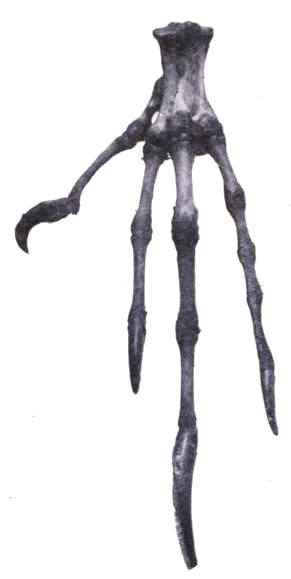Suliformes facts for kids
Quick facts for kids Suliformes |
|
|---|---|
 |
|
| Northern gannet (Morus bassanus) | |
| Scientific classification |
|
| Kingdom: | Animalia |
| Phylum: | Chordata |
| Class: | Aves |
| Clade: | Aequornithes |
| Order: | Suliformes Sharpe, 1891 |
| Type species | |
| Sula leucogaster Boddaert, 1783
|
|
| Families | |
|
|
The Suliformes are a group of birds that mostly live near water. They include cool birds like frigatebirds, gannets, boobies, cormorants, and darters. These birds are known for their special ways of catching fish and moving around in the water. Scientists have studied their DNA to understand how they are related to other birds. They are now recognized as their own distinct group.
Contents
Meet the Suliformes: What makes them special?
Suliformes are a fascinating group of birds. They are all connected by their shared family tree. These birds are often found near oceans, lakes, and rivers. They are excellent at fishing and diving.
For a long time, scientists grouped many water birds together. But with new genetic tests, they found that some birds were not as closely related as once thought. The Suliformes were once part of a larger group called Pelecaniformes. Now, only pelicans, shoebills, and hammerkops remain in the Pelecaniformes group.
Scientists believe that Suliformes are distantly related to these pelican-like birds. They also think that Suliformes, along with loons, penguins, and storks, might all come from a very old common ancestor. This idea suggests a "superorder" of waterbirds.
Understanding the Suliformes family tree
Scientists use special diagrams called cladograms to show how different animals are related. These diagrams help us see which groups split off first. For Suliformes, the frigatebirds seem to be the earliest group to branch off. After them come the gannets and boobies. Then, the darters and cormorants are very closely related to each other.
This family tree helps us understand the evolution of these amazing birds. It shows how they developed their unique features over millions of years.
Types of Suliformes: Families and species
The Suliformes order includes several families, each with its own unique birds. Here are the main families and some of their cool members:
Frigatebirds: Masters of the air
Frigatebirds are known for their huge wings and long, forked tails. They are amazing flyers and can stay in the air for days! They often steal food from other birds. Their feet have a special comb-like edge on the middle claw. This is a unique feature of Suliformes.
- Fregatidae (Frigatebirds)
- Magnificent frigatebird, Fregata magnificens
- Ascension frigatebird, Fregata aquila
- Christmas Island frigatebird, Fregata andrewsi
- Great frigatebird, Fregata minor
- Lesser frigatebird, Fregata ariel
Gannets and boobies: Expert divers
Gannets and boobies are fantastic divers. They plunge headfirst into the water to catch fish. They have strong, pointed beaks perfect for this.
- Sulidae (Gannets and Boobies)
- Blue-footed booby, Sula nebouxii
- Peruvian booby, Sula variegata
- Masked booby, Sula dactylatra
- Nazca booby, Sula granti
- Red-footed booby, Sula sula
- Brown booby, Sula leucogaster
- Abbott's booby, Papasula abbotti
- Northern gannet, Morus bassanus
- Cape gannet, Morus capensis
- Australasian gannet, Morus serrator
Cormorants: Underwater hunters
Cormorants are excellent swimmers and divers. They use their strong legs and webbed feet to chase fish underwater. They often come to the surface to dry their wings in the sun.
- Phalacrocoracidae (Cormorants)
- Pygmy cormorant, Microcarbo pygmaeus
- Reed cormorant, Microcarbo africanus
- Crowned cormorant, Microcarbo coronatus
- Little cormorant, Microcarbo niger
- Little pied cormorant, Microcarbo melanoleucos
- Brandt's cormorant, Urile penicillatus
- Red-faced cormorant, Urile urile
- Pelagic cormorant, Urile pelagicus
- † Spectacled cormorant, Urile perspicillatus (extinct)
- Bank cormorant, Phalacrocorax neglectus
- Socotra cormorant, Phalacrocorax nigrogularis
- Pitt shag, Phalacrocorax featherstoni
- Spotted shag, Phalacrocorax punctatus
- Black-faced cormorant, Phalacrocorax fuscescens
- Australian pied cormorant, Phalacrocorax varius
- Little black cormorant, Phalacrocorax sulcirostris
- Indian cormorant, Phalacrocorax fuscicollis
- Cape cormorant, Phalacrocorax capensis
- Japanese cormorant, Phalacrocorax capillatus
- White-breasted cormorant, Phalacrocorax lucidus
- Great cormorant, Phalacrocorax carbo
- European shag, Gulosus aristotelis
- Flightless cormorant, Nannopterum harrisi
- Neotropic cormorant, Nannopterum brasilianum
- Double-crested cormorant, Nannopterum auritum
- Rock shag, Leucocarbo magellanicus
- Guanay cormorant, Leucocarbo bougainvillii
- Bounty shag, Leucocarbo ranfurlyi
- New Zealand king shag, Leucocarbo carunculatus
- Chatham shag, Leucocarbo onslowi
- Otago shag, Leucocarbo chalconotus
- Foveaux shag, Leucocarbo stewarti
- Auckland shag, Leucocarbo colensoi
- Campbell shag, Leucocarbo campbelli
- Imperial shag, Leucocarbo atriceps
- South Georgia shag, Leucocarbo georgianus
- Crozet shag, Leucocarbo melanogenis
- Antarctic shag, Leucocarbo bransfieldensis
- Kerguelen shag, Leucocarbo verrucosus
- Heard Island shag, Leucocarbo nivalis
- Macquarie shag, Leucocarbo purpurascens

Darters: The "snakebirds"
Darters are also known as "snakebirds" because of their long, thin necks. When they swim, only their neck and head are visible above the water. They spear fish with their sharp beaks.
- Anhingidae (Darters)
- Anhinga or American darter, Anhinga anhinga
- Oriental darter or Indian darter, Anhinga melanogaster
- African darter, Anhinga rufa
- Australasian darter or Australian darter, Anhinga novaehollandiae
Images for kids



